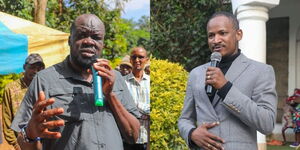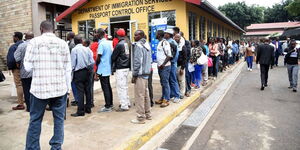Energy Petroleum and Regulatory Authority (EPRA) Director General Daniel Kiptoo has explained the government's plan to diversify investment in fuel and electricity to cushion Kenyans from inflation pressure.
Speaking on Wednesday, September 14, after the government hiked fuel prices in the country, Kiptoo disclosed the state is focused on shifting investment in other renewable energy sources.
Kiptoo specifically pointed out plans to leverage on geothermal energy, which Kenya is among the leading producers globally. According to the regulatory authority, Kenya's wind and solar energy potential can also be utilised to avoid over-reliance on energy importation.
He defended President William Ruto's plan to suspend the subsidy program, arguing that it was unsustainable. According to the EPRA DG, the program was launched to cushion Kenyans, especially during the pandemic. But its continued use has affected the fuel supply in the country.
"Subsidies are not good and are unnecessary in certain extraordinary circumstances. The thinking of setting up a stabilisation fund under the Petroleum Development Levy was to allow the government to be able to build up a fund during the times when the oil prices were low," he stated during an interview with Africa Uncensored.
Kiptoo further echoed retired President Uhuru Kenyatta's sentiments explaining that the latest fuel hike is a global phenomenon.
According to the latest review, Super Petrol increased to a record high Ksh179.30 per litre. Diesel will retail at Ksh165 while Kerosene increased by Ksh20 to Ksh147.94 in Nairobi.
Intervention Plans to Stabilise Fuel and Electricity Costs
According to EPRA Director General, the energy stakeholders are negotiating with the government to lower the taxation regime. He noted that this would help replace the subsidy program, which even the International Monetary Fund (IMF) stated was not sustainable.
Data from the National Treasury shows that taxpayers have spent Ksh144 billion, including Ksh60 billion, in the last four months alone on the subsidy program.
To also tackle high fuel prices, he noted that the government had laid out plans to reinvest in oil fields and encourage local oil production, including Turkana oil fields which have not been fully utilised.
Kiptoo further disclosed that the government plans to build infrastructure to harness wind and solar power. This will help the country diversify its sources of energy and thus reduce pressure on electricity production.
He said Ruto's government was working to empower and build expertise in power generation with the help of Kenya Electricity Generating Company (KenGen).
Other than a generation, Kiptoo outlined the government's plan to step up the transmission of solar and wind energy through proper investment plans.
"The biggest challenge is that power projects takes 5-7 years to develop. We are negotiating to lower the generation cost which will then bring efficiency in transmission and distribution. The customers will then have a long term sustainable benefit over the reduction of the cost," Kiptoo remarked.
Kenya Power is also running a pilot programme on the rollout of charging stations for Electric Vehicles (EVs) in the country. The utility firm intends to install charging stations in different households to encourage the use of electric cars.
This will help address the problem of increasing fuel prices in the country.
Ruto is also set to lay out a new plan that will replace the subsidy programme and lower the cost of living in the country.












